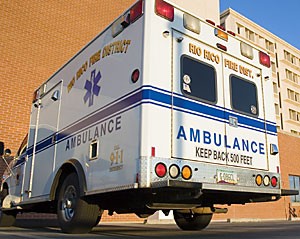University Medical Center and the Tucson Fire Department are participating in a program that wirelessly transmits the images, sounds and vital statistics of a patient in an ambulance to the emergency room of a hospital.
The technology allows a doctor to see, in real time, scenes of a patient or accident and enables medical professionals to coordinate treatment, said Dr. Rifat Latifi, interim medical director of UMC’s Level 1 trauma center and director of telemedicine services at the UA.
The program is the first of its kind to be implemented in the world, Latifi said.
“”It’s almost like being there,”” he said. “”You see the patient, you see the paramedic, the procedures and the vital signs.””
Immediate information is key to emergency treatment, Latifi said. Instead of short radio spurts, the new video link will allow a continuous stream of data, he added.
Seventeen paramedic units currently have the video link equipment installed, including a high-powered camera that can produce crystal clear images, according to www.emstelemedicine.com , an emergency medical services Web site.
There is also a camera mounted to the outside of some of the ambulances so medical providers and emergency dispatchers can see the scene of the accident firsthand, said Francisco Leyva, a Tucson city engineer and project manager.
A doctor can remotely zoom in the camera more closely, enhancing an image up to 22 times, to see a specific area on the patient from his workstation in the hospital, according to The Associated Press.
The video link system will be integrated into Tucson’s public safety and public works wireless Internet system – a Wi-Fi network that controls traffic lights and other public safety functions, Leyva said.
Although much stronger, the city’s wireless network is similar to the wireless router some have at home, Leyva said. The signal-amplifying devices will be located on outdoor light poles and stoplights.
Creating a “”Wi-Fi cloud”” over Tucson, the technology allows data to be transmitted wirelessly in area equivalent to about 100 square miles, Leyva added.
There are two main components used in the ER-link program.
The CAREpoint EMS workstation is the computer medical providers use at the hospital, while the Rosetta-VC provides the equipment to the ambulance, according to the manufacturer’s Web site.
Although the technology is a step forward for surgeons and doctors, some paramedics said they regard the new system as an intrusion to their work.
“”We don’t need someone watching what we do,”” said Tucson Fire Department paramedic Nick Janton. “”We’re trained, we’re skilled, we know what we’re doing. It’s almost like someone second-guessing our skills in that aspect.””









